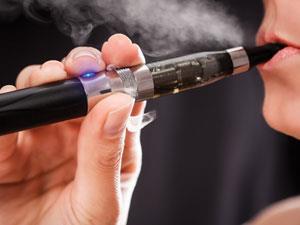Ben Valsler
This week, Jamie Durrani explains how European regulations made some students miss a popular party drink…
Jamie Durrani
One afternoon in October 2014, student-partygoers across Europe woke up to find that one of their favourite night time tipples had been removed from shop-shelves – apparently because it contained high levels of an ingredient used in antifreeze. Fireball cinnamon whisky caused something of a stir after a batch intended for the North American market was accidentally shipped across the Atlantic, with a propylene glycol content deemed unacceptable by European regulators.

So what was all the fuss about? Why would a batch of whisky containing propylene glycol be perfectly fine to drink in the US but not in Europe?
Propylene glycol, or propane-1,2-diol, to give it it’s Iupac name, is a small, synthetic organic compound comprising three carbon atoms, a few hydrogens, and two hydroxyl groups. At room temperature it is a syrupy, colourless liquid, with a slightly sweet flavour. It readily mixes with a broad range of solvents and is particularly good at retaining water. These properties, along with its relatively low toxicity, make propylene glycol a convenient additive for the food industry, where it is used as an emulsifier and preservative – helping to deliver colourings and flavour compounds, and enabling food products to retain their texture.
In rare cases, propylene glycol can cause an allergic reaction, while intake of very large quantities can lead to kidney failure and depression of the central nervous system. However, this form of propylene glycol poisoning is more often associated with inappropriately high doses being delivered directly into the bloodstream during medical treatments.
In the US, the Food and Drug Administration allow alcoholic beverages to contain up to 5% propylene glycol, and in Canada no numerical limit is placed on the amount that can be added to foodstuffs – as long as producers adhere to ‘good manufacturing practice’.
But in Europe the rules are stricter, allowing for just 3 grams per kilo in flavourings, and only a 0.1% content in food stuffs and beverages. Because of this the makers of Fireball have to produce different batches of whisky for different countries.
That said, propylene glycol and other additives derived from it do still appear in numerous food and drink products sold widely in Europe. In fact, in the year preceding the Fireball incident, 730,000 tonnes of the chemical were made across the continent, of which around a third was used in food production. Alongside foods like ice cream, cake mixes and salad dressings, propylene glycol is also used in drug formulations, e-cigarette oils, cosmetics, and of course, antifreeze.

The same properties that make propylene glycol a useful additive for the food industry make it a good candidate for many of these other applications. The characteristics that help it carry flavouring molecules also make it effective at bringing pharmaceutical compounds into forms suitable for intravenous or oral consumption. And its use in flavourings also explains its presence in e-cigarette liquids – although the safety of using propylene glycol for this purpose is hotly debated.
Its ability to retain water means it’s found in many skin-hydrating cosmetic products; and its solubility in water also explains its use in antifreeze. When water and propylene glycol mix, the freezing point of the water lowers, helping to remove the ice from your car windscreen. Because of propylene glycol’s relative safety, it is regularly used as a substitute for the substantially more toxic ethylene glycol in order to make environmentally-friendly de-icers. This seemingly slight change in ingredients can vastly reduce health-hazards antifreeze can cause to pets and other animals attracted to its sweet taste.
So raise a glass to propylene glycol, a versatile, if somewhat controversial compound.
Ben Valsler
Jamie Durrani on propylene glycol. Next week, Kat Arney has a compound that you’ll be familiar with if you’ve ever fallen for the temptation to pick at a scab…
Kat Arney
The great 17th century Italian biologist Marcello Malpighi used an early microscope to zoom in on blood clots, noting that they consisted of a tangled web of fibres and trapped red blood cells.
Ben Valsler
Join Kat Arney next week to find out more about fibrinogen and its polymer fibrin. Until then, let us know what you would like to hear more about – email chemistryworld@rsc.org or tweet @chemistryworld. Thanks for joining me, I’m Ben Valsler.













1 Reader's comment